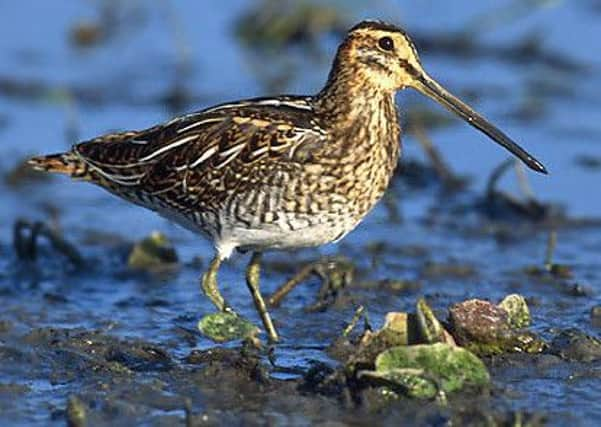Birdwatch: Tremulous noise of the snipe returns for spring


He rises high in the air, circles and then goes higher, before plunging at a steep angle. As he dives he fans his tail with the two outermost feathers protruding at right angles and it is the vibrations produced by these two feathers that makes the sound, known as drumming.
The snipe also makes a rhythmic chicka-chickarr call, known as ‘chipping’ and, along with the drumming, is how he shows other snipe the boundaries of his territory and also to invite a female in.
Advertisement
Hide AdAdvertisement
Hide AdNesting snipe in Britain, especially in southern England, declined in the last half of the 20th century because of habitat loss, especially the damp pastureland that was once widespread across our countryside.
All that a snipe really needs is damp ground that is sufficiently soft for it to probe for worms with its extraordinarily long bill and even a small wet field corner will do.
On many nature reserves wet pasture is being restored and grazed with just sufficient cattle or sheep to leave a mixture of pasture and rush or tussocky grass. This way not only snipe but also lapwings, redshanks, curlews and yellow wagtails are encouraged to nest.
On the moors, the blocking of drainage ditches to prevent flash flooding in lowland towns and villages is also likely to bring a rise in breeding numbers and the male snipe’s springtime drumming will become much more widespread again.
Advertisement
Hide AdAdvertisement
Hide AdThe warm southerly airflow at the weekend brought in more spring migrants, then the brakes were applied again this week with the change back to westerly winds.
Among the more unusual sightings were a Western sub-Alpine warbler trapped and ringed at Spurn after first being seen at the Warren and an Iberian chiffchaff, the second record for Spurn, first seen in bushes around the Crown and Anchor car park before being caught and ringed at Kew. The next day it was back singing and calling at the car park along with two firecrests.
There was also two quail, one at Grimston, East Yorkshire the other on Castle Hill, Scarborough, early records for a bird more often seen (or much more likely heard) much later in the summer. A red-rumped swallow from southern Europe was seen feeding over Kilnsea Wetland on Tuesday.
Ring ouzels were also reported along the coast moving back to Scandinavian breeding sites while more were reported back on Yorkshire moors.
Advertisement
Hide AdAdvertisement
Hide AdThe first common terns of the year were starting to be seen back at breeding sites while several Sandwich terns and little gulls were reported passing through inland sites.
There were also more reed and sedge warblers, the first grasshopper warblers, and common redstarts.